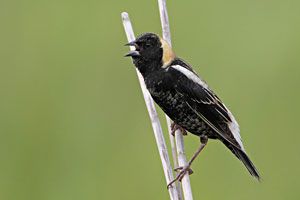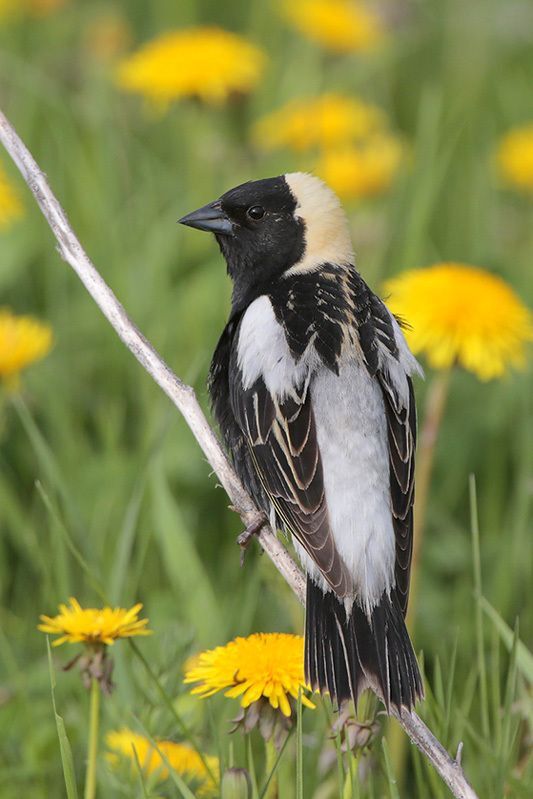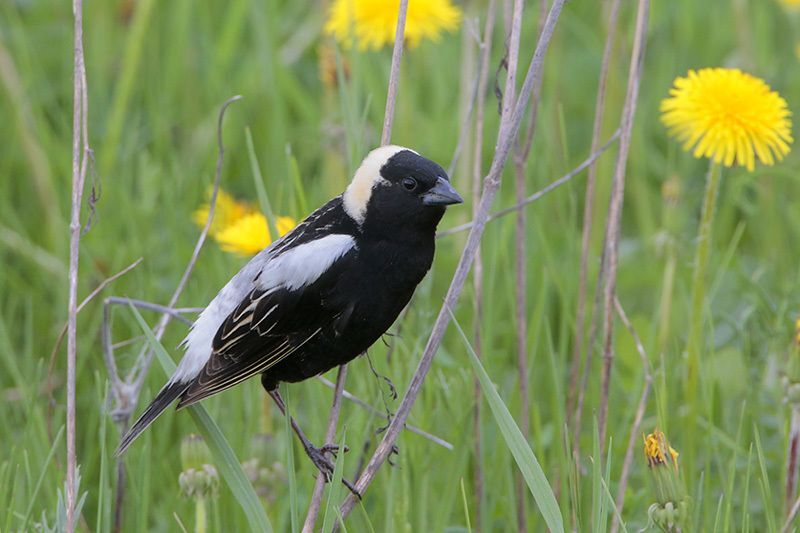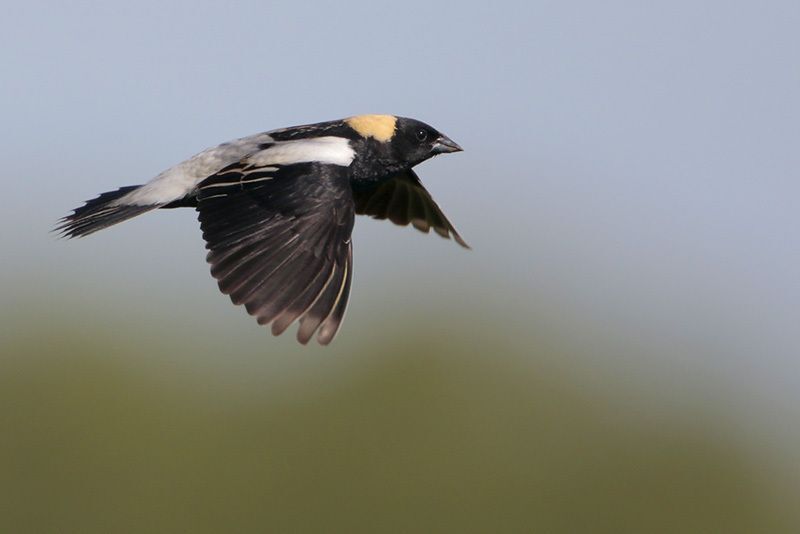Bobolink

© Greg Lavaty
Dolichonyx oryzivorus
Family: (Icteridae) Blackbirds, Orioles, and Allies
Preferred Habitat: Wet grasslands and marshes
Seasonal Occurrence: Uncommon to rare April-May; occasionally present in September.
Notes by Susan Billetdeaux: Male Bobolinks in breeding plumage are easy to recognize. The combination of yellow, black and white is unlike any other North American bird. After breeding, males acquire basic plumage which is very similar to females: predominant colors are yellow and buff with black stripes on the head. They are much more common in the eastern half of the U.S. and are rare in Texas. They breed throughout the northern U.S. and Canada and winter in South America. Bobolinks, along with the grasslands upon which they depend, have been in decline over the past several years. Conservation efforts are going on in many states and Canadian provinces where they breed. Conservation and proper management of grasslands and farms are vital to provide nesting habitat.
Profile by Grace Yaros: Bobolinks are handsome, fairly small blackbirds. Females are golden overall with blackish streaks on their backs, sides, and crown, including a line behind their eye. Breeding males are distinctive: they are black with mostly white backs and a golden nape. During the non-breeding season, males are similar in appearance to females.
During the spring and summer, Bobolinks can be found across much of the northern United States and southern Canada, from New England and the Mid-Atlantic westward to Montana and as far south as West Virginia. They breed in open grasslands, hay fields, and meadows. Males will sing their bubbly, somewhat mechanical song from a perch or as they fly low over their territories. Their nests are built on the ground, and males and females both mate with multiple partners. Outside of the breeding season, they are very social, gathering in large flocks. Bobolinks spend the winter in southern South America – mostly in Argentina, Bolivia, and Paraguay – and have one of the longest migrations of any North American songbird! During the spring, they may be found on the Bolivar Peninsula as they make their way north.
Bobolinks feed primarily on grains, and are considered pests in rice fields, where they may be shot or trapped. Their populations have declined in the past few decades, but collaboration with landowners to adopt practices such as grazing fields less intensively and mowing hay fields before and/or after peak nesting season will help ensure that future generations will be able to continue to marvel at these spectacular birds.
-
Cornell Lab of Ornithology
-
Bird Guide
-
Bird Library

© Greg Lavaty, www.texastargetbirds.com

© Greg Lavaty, www.texastargetbirds.com

© Greg Lavaty, www.texastargetbirds.com




















